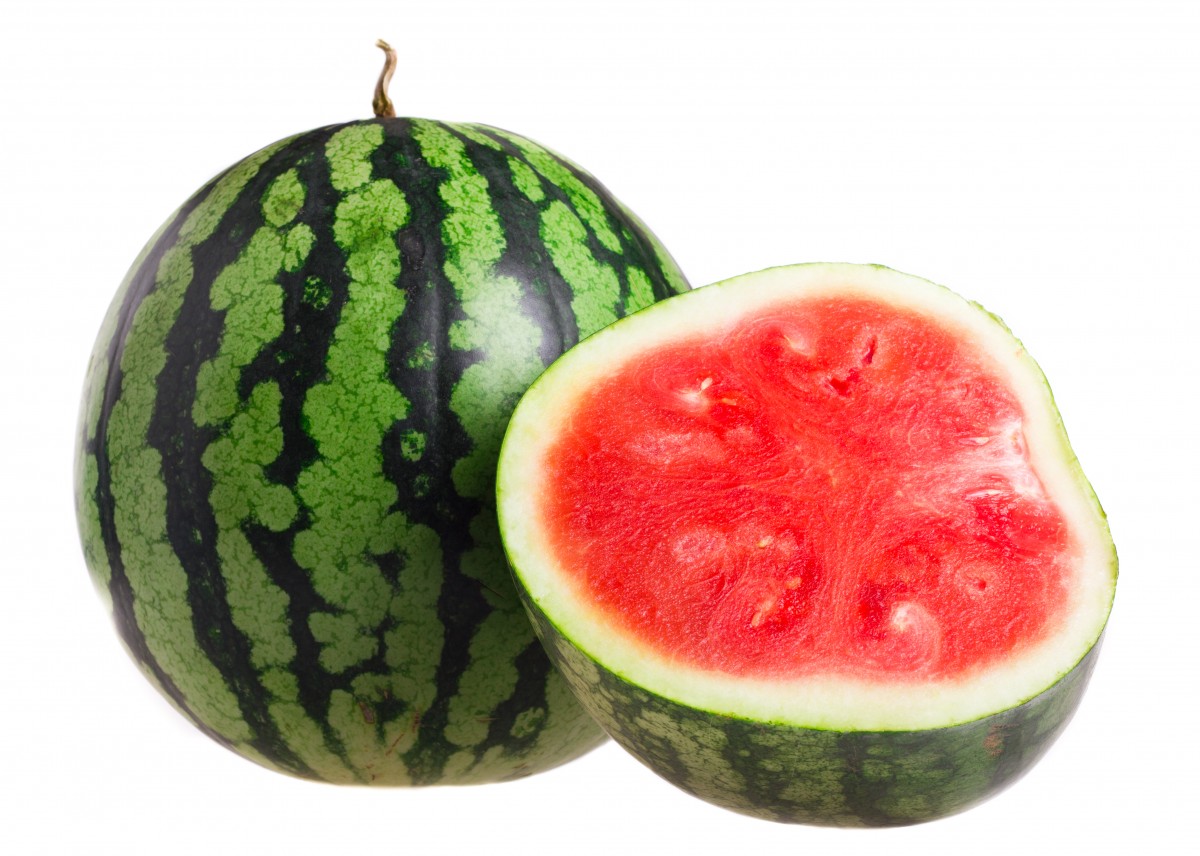
By this point in the summer, I’d wager I’m about 40% watermelon by volume. Since it’s one of the season’s most perfect (and versatile fruits, I generally spend more time eating watermelon than thinking about it! Thankfully, researchers at the Boyce Thompson Institute were more than happy to do the latter. They’ve just published news that they’ve sequenced watermelon’s “super pan-genome;” that is, a thorough map of its genes and those of its nearest relatives. In doing so, they’ve uncovered some genetic variations that support disease resistance, that were lost long ago during the domestication process. 
“‘We aimed to delve deeper into the genetic variations that make watermelons so diverse and unique,” stated Professor Zhangjun Fei, the study’s lead author. “Our findings not only provide insights into the evolutionary journey of watermelons but also present significant implications for breeding and disease resistance.’
The watermelon super-pangenome was built using reference genome sequences and genome resequencing data from 547 watermelon accessions spanning four species—cultivated watermelon (Citrullus lanatus) and its wild relatives C. mucosospermus, C. amarus, and C. colocynthis.”
Now that science knows more about the genetic history of watermelons, we can re-incorporate bits of code through breeding, that would more robust and disease-resistant fruit. As other crops have shown us, backing away from monoculture is a good thing! I hope this news means we’ll have watermelons aplenty in the summers to come.
The researchers are keen to apply their findings to vegetarian and vegan frozen items, to increase their shelf-life—and their long-term flavour. I’m a huge fan of both! It may be too late for that bag of peas I’ve had rattling around in the back of my freezer for a couple of seasons… But, once I enjoy this growing season to the last drop, I look forward to replacing it with an ice-proof version, and tasting the difference!
We’re so deep into the growing season here, it’s almost hard to believe that the local berries, corn, peppers, broccoli (and on and on!) will ever end. But when winter comes, as it always does, we’ll return to using frozen fruits and vegetables from our trusty bulk bags buried deep in the freezer. (Which are just as healthy as fresh, science has confirmed!) The only downside to dipping into this hoard is dealing with freezer burn, that state of cold dehydration that leaves too-long-frozen food mushy, shriveled, and gross-tasting.
But science has now found a solution, based on a natural process, in which animals in extremely cold environments make a type of internal antifreeze out of proteins to prevent themselves from freezing entirely solid. (Similarly to these carp we profiled a few years ago.) A team from the University of Tennessee has recently refined the method of using peptides—broken up bits of proteins—to slow ice crystal growth in frozen foods, thus reducing freezer burn As the previous version used peptides derived from animal sources, this variation is key for vegetarian and vegan consumers.
“The team generated peptides from a commercially available soy protein isolate powder by exposing it to three different hydrolyzing enzymes: alcalase, pancreatin and trypsin. Each resulting mixture of peptides was also separated by size into multiple fractions.
All of the mixtures slowed ice growth in tests, but the ones produced from alcalase and trypsin were better inhibitors than those from pancreatin. For all three enzymes, most of the activity came from the fraction with the largest peptides. The large-size fractions also ended up including some smaller peptides, which on their own didn’t keep ice crystals from growing; however, the team showed that these small compounds boosted the activity.”
The researchers are keen to apply their findings to vegetarian and vegan frozen items, to increase their shelf-life—and their long term flavour. I’m a huge fan of both! It may be too late for that bag of peas I’ve had rattling around in the back of my freezer for a couple seasons… But, once I enjoy this growing season to the last drop, I look forward to replacing it with an ice-proof version, and tasting the difference!
Last year, we reported on bad news from a trusted condiment source: Huy Fong Foods, the manufacturer of cult hot sauce sriracha, was shutting down production for the summer due to a shortage of the red jalapeños that make up the bulk of their recipe. Foodies everywhere looked forward to the next season when drought conditions would lift, peppers bloom and fruit and production would resume.
Well, none of that has happened. As anyone struggling in the most climate-change-affected areas of the world can attest, our environment is changing for the worse. All life is affected, from us down to jalapeños, which is why the sriracha shortage is officially grinding into its second year. And fans of the stuff have taken to eBay to nab what limited supplies there are at staggeringly inflated prices.
“In one of the more egregious examples, a 12-pack of 28-ounce bottles sold for $415 ($34.58 per bottle) after receiving 28 bids. One seller on the site was selling bottles of the same size for around $30, while another offered the product for an even more precipitous $80 a pop.
And people are willing to fork over large sums if it means they can flavor their food with the chili sauce. A glance at completed listings on eBay reveals dozens of Huy Fong products sold after auction just since Sunday, all well above their retail prices.
One seller offering 28-ounce bottles for $32.99 had made 115 sales as of Monday morning.”
This whole situation would be comical if it didn’t herald the complete collapse of our agriculture and supply chains! But besides that, it speaks to the unwavering dedication foodies have for their faves. If only we could harness that and use it as fuel for a more sustainable future: While California (where Huy Fong’s sriracha is manufactured) is no longer officially in drought because of a historically wet spring, their troubles aren’t over. Experts say that this cycle of extreme dryness followed by piles of precipitation (that may mean catastrophic floods) will likely be the new normal. In that case, I hope we can manage a little hot sauce to bring a bit of joy to dark times!
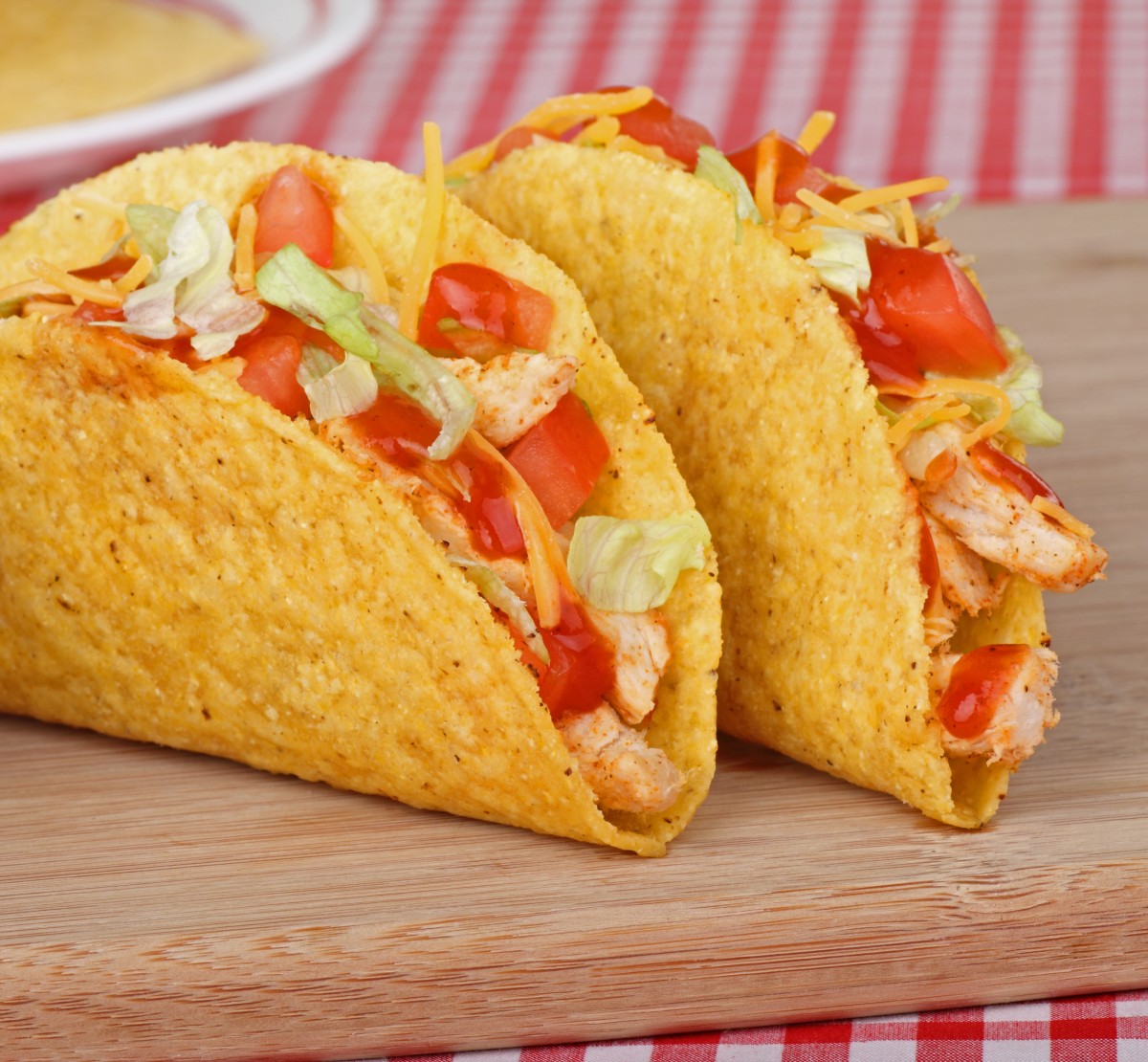
Tex-Mex restaurant behemoth Taco Bell has stuck up for the little guy this week—or have they?—by taking the smaller American chain Taco John’s to task over the latter’s trademark of the term “Taco Tuesday.” As someone who’s thrown together a weeknight taco feast or two in my time, I had no idea the phrase was trademarked—I just thought it belonged to everybody, like “Happy New Year” or knock-knock jokes. Not so, said Taco Bell, who succeeded in their petition to the U.S. Patent and Trademark Office to release Taco John’s 34-year trademark.
Their rationale, acceded to by Taco John’s, was that:
“‘Taco Tuesday’ should belong to all who make, sell, eat, and celebrate tacos. In fact, the very essence of ‘Taco Tuesday’ is to celebrate the commonality amongst people of all walks of life who come together every week to celebrate something as simple, yet culturally phenomenal, as the taco. How can anyone Live Más if they’re not allowed to freely say ‘Taco Tuesday?’ It’s pure chaos.”
Taco John’s—founded as a taco stand in 1969 in Cheyenne WY, by the Korean War vet John Turner—agreed to release the trademark, mostly because fighting over it with Taco Bell in court would cost over 1$ million USD. Current CEO Jim Creel pledged instead to give $40,000 USD to the charity Children of Restaurant Employees, which “supports restaurant workers with children by providing financial relief when either the employee, spouse or a child faces a life-altering health crisis, injury, death or natural disaster,” and has challenged Taco Bell to contribute as well.
There’s something very late-capitalist End-Times-y about this whole thing; I’m not sure Taco Bell isn’t going to quietly file for a Taco Tuesday trademark in eight months or so once this has all died down! (Let alone the absurdity of a CEO ostentatiously donating to a charity that supports his exact workers when… their workplace fails to pay them enough to weather a devastating injury or crisis? In a country where access to health insurance, and therefore care, is controlled by employers, no less!). The freedom to declare our own Taco Tuesdays was one many of us didn’t know we lacked; I’m not sure I feel the “appropriate” gratitude to a corporate giant for bestowing it upon us. What this has sparked in me is a need to make a delicious taco dinner sometime soon—on a Tuesday, or not!
Rice is the world’s most important food crop, the source of 1/5 of our planet’s total caloric intake. Many of us rely on this humble, delicious grain, not only for wow factor in dishes like risotto, nasi goreng, or jollof rice but for survi val. That’s why this recent news from the Department of Plant Pathology at UC Davis may be a game-changer for future rice crops and the people who love them. They’ve used the gene modification tool CRISPR to strike a blow against rice blast—an infection so insidious it routinely destroys 10% – 30% of the annual global crop, gaining it the epithet “cancer of rice.”
val. That’s why this recent news from the Department of Plant Pathology at UC Davis may be a game-changer for future rice crops and the people who love them. They’ve used the gene modification tool CRISPR to strike a blow against rice blast—an infection so insidious it routinely destroys 10% – 30% of the annual global crop, gaining it the epithet “cancer of rice.”
Rice blast causes patches of dead cells to appear on a rice plant. If left untreated (by extensive and pricey pesticide application), the dead patches expand until the whole plant—and a good chunk of the total crop—gives up the ghost. But the research team has come up with a cinematically named CRISPR intervention (“lesion mimic mutants”) that just might do the trick.
“These genetic mutations cause plants to display the same patches of dead cells present during an infection, despite the plant being infection-free. As a result, their immune systems swing into action, killing the cells around the lesions to prevent the ‘infection’ from spreading. […]
Plants with the natural mutation were small and didn’t yield much rice, but the researchers were able to identify the mutant gene, which they call RBL1 (resistance to blast1).
Using CRISPR and other techniques, they’ve now created a line of rice plants with a version of the RBL1 mutation that makes them resistant to three bacterial and fungal infections — including rice blast — while also producing good yields.”
The researchers are encouraged by the results, and are looking forward to trying the process out with tastier and more common rice strains. (This first stage was accomplished with fast-growing rice not typically consumed by humans.) Once again, gene editing comes through with a low-cost and -impact solution to a big problem. As a wise man once said, “Rice is great if you’re really hungry and want to eat two thousand of something;” if this genetic modification preserves our ability to do precisely that, greater food security is not far behind!
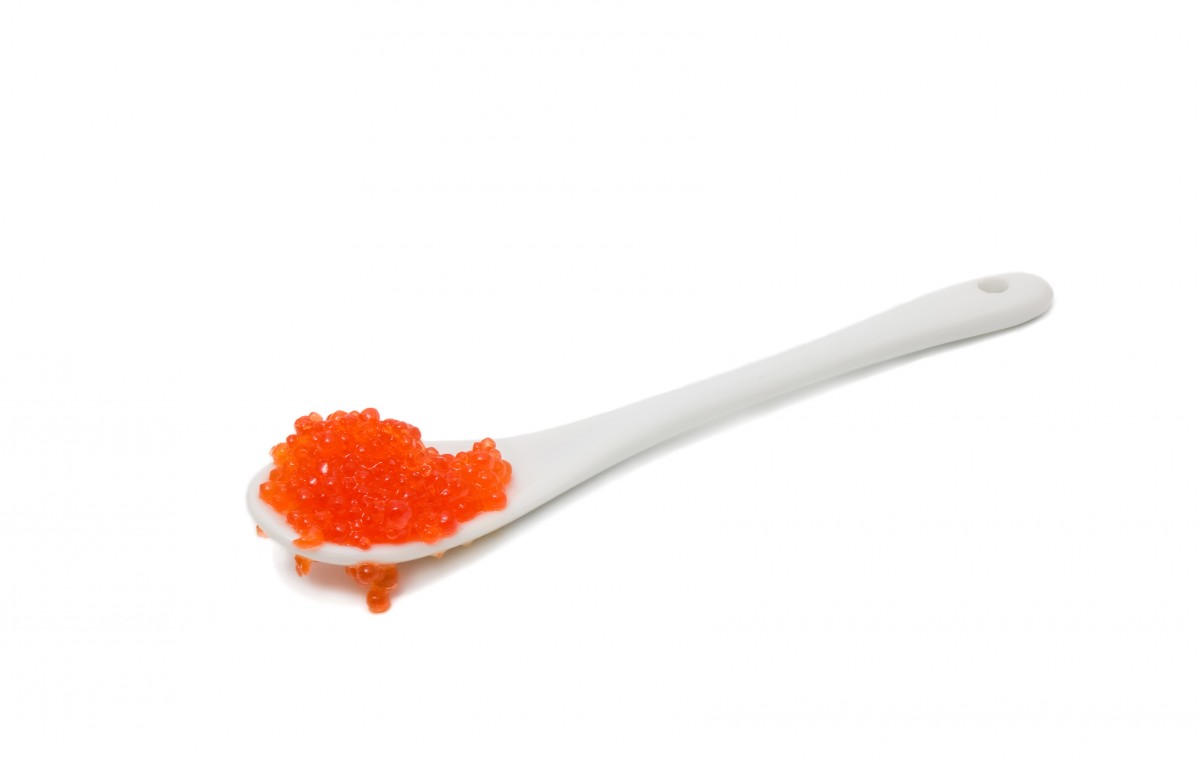
Caviar is a delicacy renowned around the world for its briny flavour—and luxury price point! But, trust a Youtuber to fly in the face of tradition and see in a jar of the delicately delicious fish eggs not just a decadent snack, but LIFE. Hopping on the apparent content bandwagon of hatching-things-from-supermarket-eggs (I don’t spend nearly enough time on the internet), up-for-anything creator Max Fosh decided to try his hand at a distinctly aquatic variation. He acquired tarama, or carp caviar, from a Waitrose (the poshest grocery store chain in the U.K.) with the aim of fertilizing the eggs within and hopefully hatching a fish. After a trip to a local fish farm to snag a syringe of milt, Fosh set about creating life in a humble Tupperware on his windowsill. As Fosh states in his Youtube video, in his deeply non-sciencey way:
“What I remember from school, fish squirt lots of eggs, squirt lots of sperm, mixy-mixy in the river [or] in the pond, then you have lots of little baby fish. […]
I had to splurge on some of the pricier [caviar], the more organic bits, as according to Simon [the fish farmer], cheaper, more processed varieties wouldn’t work. […] Even then, he didn’t really fancy my chances. ‘A big carp might produce a million eggs and not a single fish survives the week.’”
Fosh’s first attempt fails, which he attributes to the direct sunlight on his windowsill “cooking” the eggs. But with another spoonful of caviar and the last dregs of milt in his syringe, he manages to fertilize a few eggs and nurture one fry in particular into adolescence. Dubbing his charge “Max Fish,” Fosh gets it an aquarium and bonds emotionally – until the day a few months later when he releases Max 2.0 into the more hospitable environment of a friend’s pond.
There’s a lesson here, about how much we supermarket shoppers are separated from the life cycles that once naturally brought us food. (The difference between buying chicken thighs on a styrofoam tray and raising and killing your own bird for dinner is significant.) But it’s also just plain charming to watch a completely normal person shepherd a tiny fish into existence in an improbable series of events. As far as we know, Max Fish is still swimming around that pond, unaware of its fame. But we can look towards it, and recognize the vast interrelationships—and luck—that mark our food chain. And our lives!
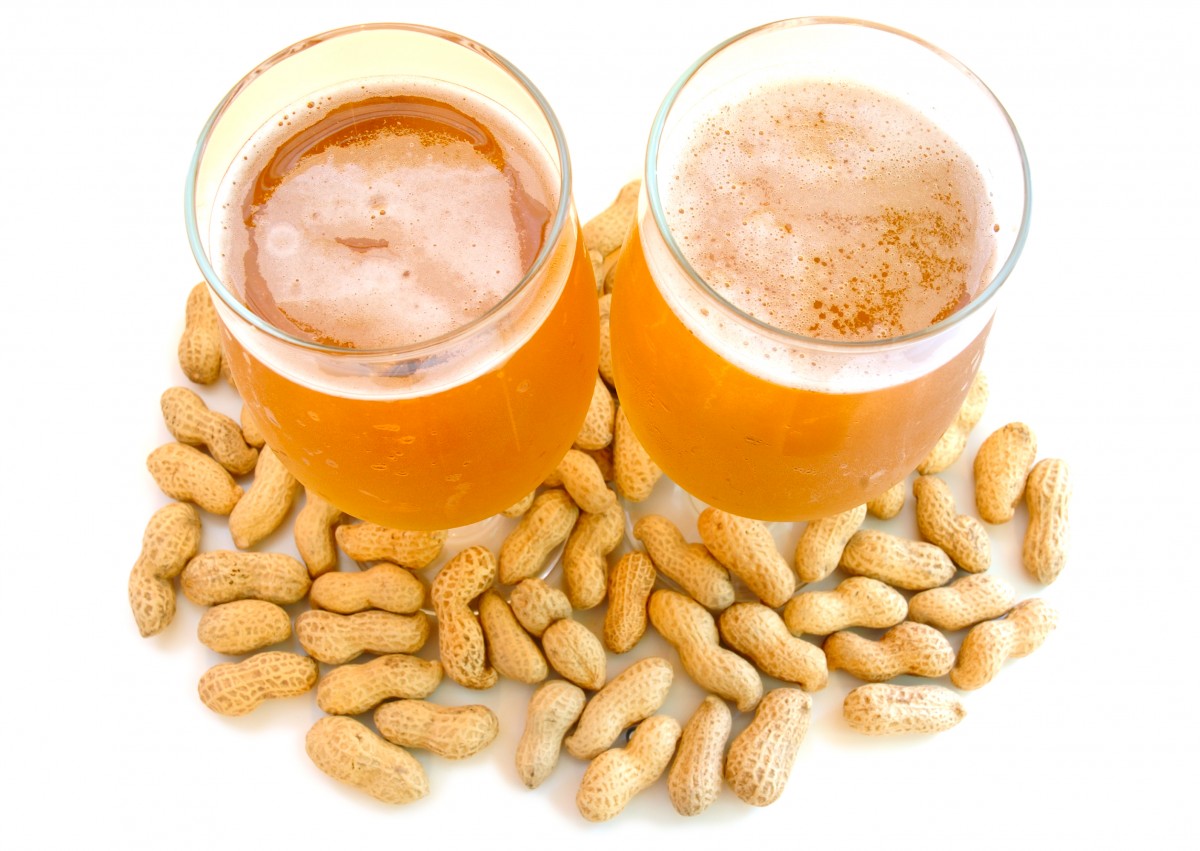
Today’s dispatch is for our Argentinian readers, who, in addition to bestowing on the world culinary delights such as asado and chimichurri, have also brought us a heaping platter of delicious food science to the table this month! It’s all thanks to a “bartender thing” Brazilian researcher Luiz Pereira observed when travelling through Buenos Aires: dropping a couple of peanuts into a glass of beer. The peanuts naturally sink, being denser than water—but then they start accumulating bubbles and float to the top of the brew. There the bubbles are loosed and they drop down again… Until more bubbles form. and pull them back up. And the cycle continues.
Fascinated scientists have now dug into what they dub the “beer-gas-peanut system,” and believe they may have cracked the party trick—with interesting real-world implications.
“They found that the larger the ‘contact angle’ between the curve of an individual bubble and the surface of the peanut was, the more likely it was to form and grow.
But it cannot grow too much—a radius of under 1.3 millimetres is ideal, the study said.
Pereira said he hoped that ‘by deeply researching this simple system, which everyone can grasp, we can understand a system’ that would be useful for industry or explaining natural phenomena.
For example, he said the floatation process was similar to the one used to separate iron from ore.
Air is injected, in a controlled way, into a mixture in which a mineral— such as iron— ‘will rise because bubbles attach themselves more easily to it, while other (minerals) sink to the bottom,’ he said.
The same process could also explain why volcanologists find that the mineral magnetite rises to higher layers in the crystallised magma of the Earth’s crust than would be expected.”
This new study shows that there’s a scientific understanding of basically everything, no matter how simple and every day. And I love how it relates the humble glass of beer to how the earth’s crust works. It really makes me feel accomplished when I enjoy a bevvie alongside my BBQ like I’m doing my bit for research! Now, I’m off to see if they same principle works for that classic Southern summer refresher Peanuts & Coke —wish me luck!

Condiment industry titan Heinz is—much like what you once had to do to get their ketchup out of their classic bottle—shaking things up again! Though this time, rather than growing tomatoes on “Mars”, the company is embracing the future by debuting what they call their Heinz Remix dispenser. This contraption will be trialled in restaurants through to 2024, where diners can start with a “base” sauce (including ketchup, Heinz 57, ranch, and others) and then add “enhancer” flavours at three degrees of intensity (like chipotle, mango, or buffalo), which will then be dispensed out to them. This will allow folks to create sauces more in line with their own tastes in seconds and—most importantly, of course— generate data for Heinz to mine and potentially make new mass-market flavours to sell.
“‘We are very, very clear that away-from-home and foodservice gives us an opportunity to test, to learn, to understand and to build trends much earlier than we have done historically,’ said Peter Hall, Kraft Heinz’s head of its North American foodservice division.
Hall said the company is still working through the specific business model for the Heinz Remix. It’s also looking at how the dispenser could be used for drive-thru orders, he said. But the machine requires more time and effort than throwing a handful of ketchup packets in a takeout bag, which will likely pose a challenge for speed-focused drive-thru lanes.”
(I wonder if Heinz and Wendy’s might do a collab—this sounds like a job for that new drive-thru AI [link: http://dfc.com/4171-2/] of theirs!)
Apparently, the math works out to a staggering 200 potential flavour combos. However, notably missing from the advance list of base sauces is mayonnaise; perhaps Heinz is hoping to avoid another naming debacle that might crop up? And around the Heinz offices, workers are digging an unusual mix: mango ketchup, which I imagine would be terrific on spicy sweet potato fries! I’m so glad corporate America is innovating hard in the areas that really need it, freeing us to enjoy functionally unlimited sauce customization. But when the world is actually burning, perhaps the little things become that much more precious.
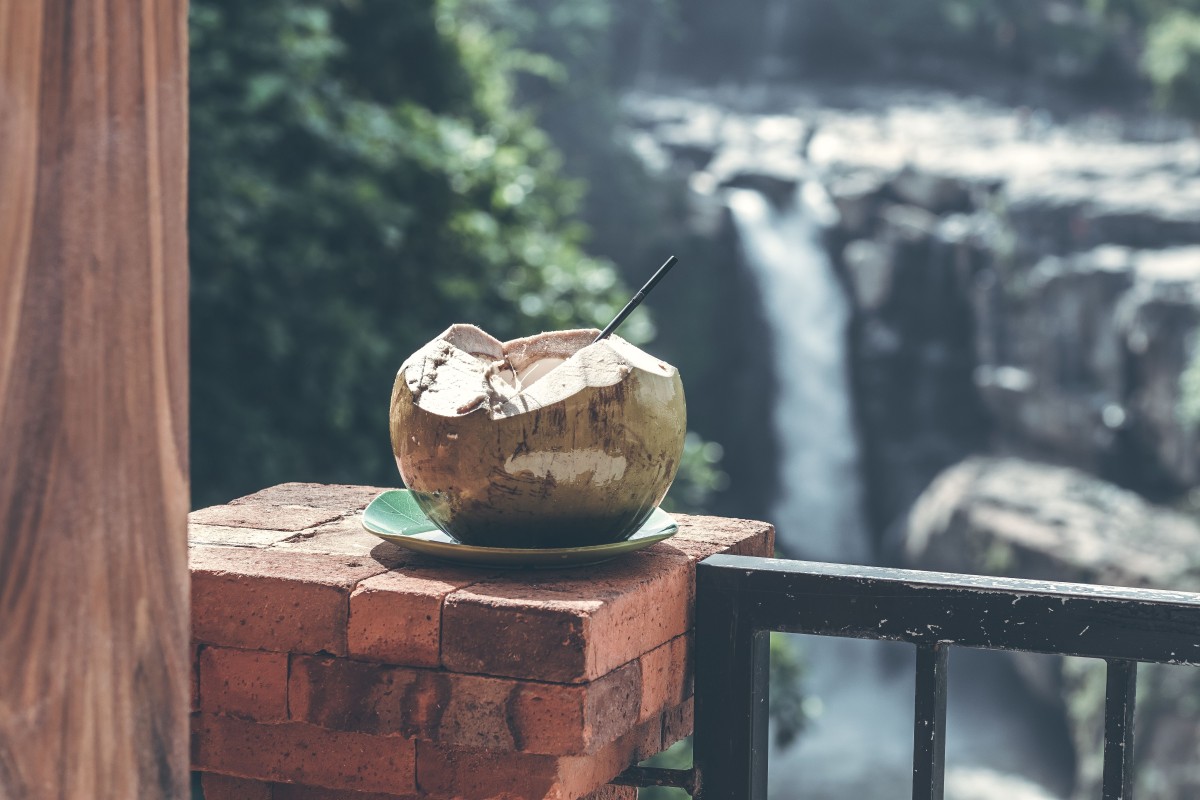
As the temperature goes up, we humans have to be more careful about the pesky task of hydration. Keeping cool and full of fluids is important during the summer—and, thankfully, many beverages suit the situation besides boring old water! Chock full of those precious electrolytes is coconut water, which is the clear juice inside the very centre of young coconut fruits. Coconut water is prized in tropical countries for its refreshing properties but hasn’t made much of a dent in our neck of the woods, except as a specialist, natural alternative to something like Gatorade. But Vita Coco, one of the biggest coconut water brands, is hoping to change this situation and crack open (if you’ll excuse the pun!) several new beverage markets with a deft rebrand.
“Vita Coco is working with Alfred Coffee, a chain with locations in Los Angeles, San Francisco and Austin, Texas, to use its recently launched Barista MLK, a plant-based coconut milk developed in partnership with
baristas. Other coffee chain partnerships are expected to be announced later this year.
An agreement with Bloom Nutrition, a female-focused health and wellness brand, is touting Vita Coco as a supplement to greens in smoothies and other food offerings. […]
Vita Coco is getting its coconut water stocked in bars, restaurants and clubs, starting with a few locations in The Hamptons this summer. Several locations will serve the Coco Blanco, a drink made with Vita Coco coconut water, tequila, agave and lime. At the Surf Lodge, the hotel and restaurant will offer Coco Blanco, and Vita Coco will be automatically served on a tray next to a spirit drink. The Vita Coco logo also will adorn surfboards and yoga mats.”
On a fascinating note, the company states it’s modeling its bid for ubiquity on the success of Ocean Spray’s cranberry cocktail, which until this very moment I didn’t realize is a startlingly regional drink. (In the 1940s, Ocean Spray basically invented the Cape Codder out of thin air, and here we are 80 years later up to our ears in Cosmopolitans.) Time will tell if coconut water treads the path forged by New England’s finest Thanksgiving juice, and if the 18th season of And Just Like That… features the gals downing coco-tinis after porting their consciousnesses into robot bodies, post-Singularity. With luck—and proper hydration—may we meet the future too!
The future has finally come for our fast food! Next month, the venerable burger chain Wendy’s will bring the power of AI to what I imagine to be one of the most trying of workplaces: the drive-thru. At a trial location, a Google Cloud AI-based host will speak with customers and take their orders, all while rolling with the idiosyncrasies of human speech and meaning. (For example, not getting confused when a human asks for a milkshake, rather than using the trademarked term “Frosty.”). The corporate overlords behind the idea see it as the solution to rampant labour shortages. And they are definitely excited.
“This ‘creates a huge opportunity for us to deliver a truly differentiated, faster and frictionless experience for our customers,’ Chief Executive Officer Todd Penegor said in a statement. […]
Opinions on what AI will mean for workers and companies vary greatly, from massive disruption to marginal change. In the view of Presto Automation, which offers an AI ordering platform for restaurants, the technology will shake up the industry.
‘I don’t think in three years, there’s going to be a drive-thru having a human take your orders,’ Krishna Gupta, Presto’s chairman and interim chief executive officer, told Bloomberg Television last week.
Wendy’s, which is debuting its chatbot at a company-owned store near Columbus, Ohio, is trying to reduce miscommunication and mistakes by automating the process, it said. The company declined to comment on how the technology might reduce the need for employees, though it said the system should help streamline the ordering process so staff can focus on serving food quickly.”
Cool though this is, I’m frankly a bit tired of the utopianism that folks leveraging AI in weird places keep going trotting out. The wilfully vague claim that having an AI on the drive-thru will “reduce the need for employees” is not only ominous-sounding, but it also doesn’t address why the employees—these corporate overlords’ fellow humans—aren’t there. Like Canada, the USA is being hit hard by grim economic realities. People aren’t signing up to work in places like the Wendy’s drive-thru for a number of reasons, including the fact they’re not getting paid fairly for their contributions.
In my utopian future, I’d much rather AI take the pressure off humans who can then be paid living wages for valuable work or, heck, who can devote their lives to art or their own small businesses thanks to a universal basic income! The lack of concern for workers in the Wendy’s equation really tips the corporation’s hand: save operating money by cutting labour, livelihoods of real humans be damned. As the concept of centaur chess has shown us, uniting human intuition and AI processing power can create a powerful alliance greater than the sum of its parts. Instead of erasing the human, Wendy’s—and other corporations pinning their fiscal hopes on AI—might do well to emphasize us… in bold type!